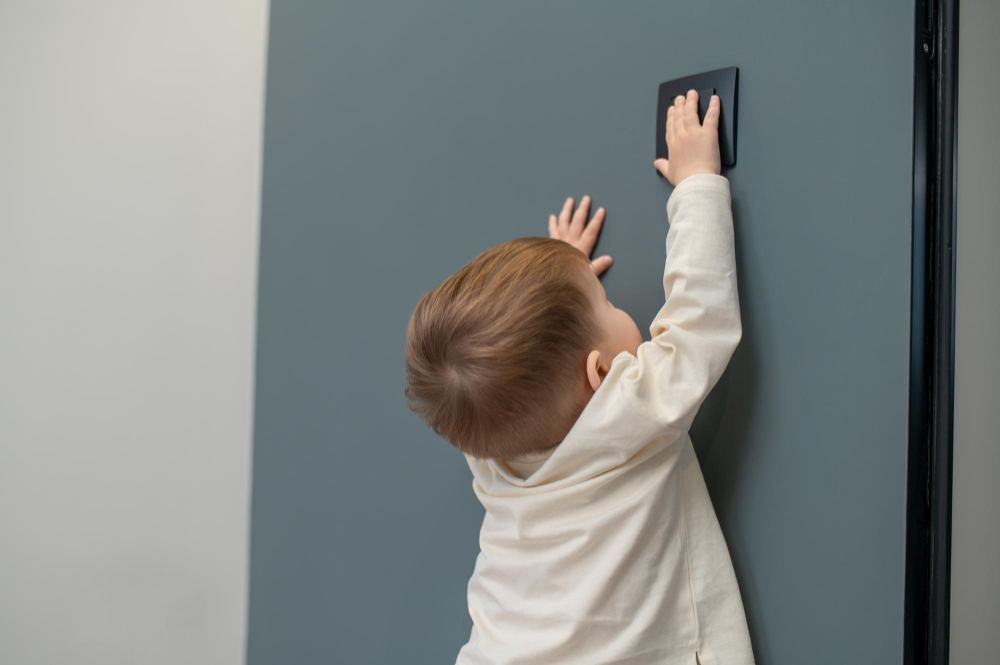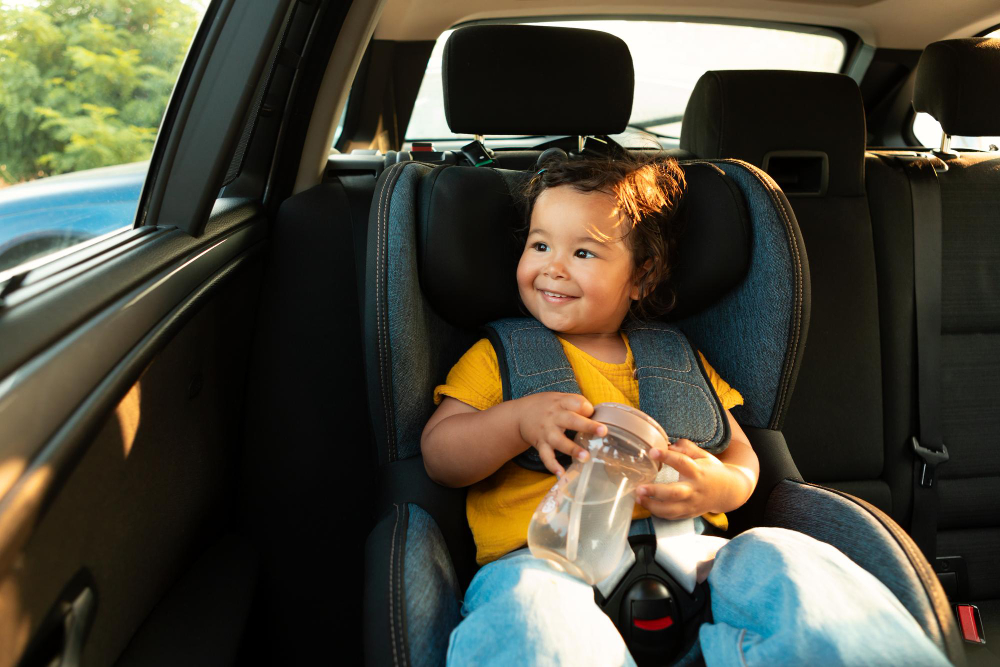8Mar
Safeguarding: Creating a Safe Haven for Your Baby
Baby-proofing your home is a crucial step in ensuring the safety and well-being of your little one. As babies grow and become more curious, their natural instinct to explore their surroundings puts them at risk of encountering potential hazards. From electrical outlets to sharp edges, and from choking hazards to unstable furniture, the home environment can pose numerous threats to an infant.

By taking proactive measures to baby-proof, parents create a secure space where their child can navigate and play without unnecessary risks. This not only promotes a sense of security for the baby but also grants parents peace of mind, allowing them to focus on fostering a nurturing and enriching environment for their child’s overall development. Babyproofing is an investment in the safety and happiness of your family, offering a protective haven for your little one to thrive in their early years.
Baby-Proofing Essentials
Babyproofing isn’t just about preventing spills – it’s about creating a fortress of safety. Creating a secure environment is about laying a foundation of safety, a groundwork that allows your baby to navigate their world with curiosity and confidence.
Start with durable corner protectors to soften sharp edges, and secure cabinet and drawer locks to keep curious fingers away from household hazards, such as kitchen knives. Anchor heavy furniture to prevent tipping and explore the wide array of baby gates to cordon off potentially dangerous areas and staircases. Ensure that poisonous chemicals are on top shelves and toiletries are locked away. Invest in a pool net and gate. These measures not only prevent bumps and bruises but also cultivate an environment where your baby can confidently explore. Each corner cushioned, every cabinet locked, and all potential hazards eliminated contribute to building a fortress of protection – not to restrict, but to liberate your baby’s explorative spirit.
A Safe Sleep Environment
Sleep is the cornerstone of a healthy baby, and creating safe sleeping practices for babies is paramount to their overall well-being and development. The sleep environment plays a crucial role in reducing the risk of Sudden Infant Death Syndrome (SIDS) and ensuring a restful and rejuvenating sleep for the baby.
The ABCs of safe sleep are fundamental guidelines that contribute to creating a secure and conducive sleep environment for babies. A for ‘Alone’ – babies should always sleep alone in their designated sleep space, without sharing the bed with toys or siblings. B for ‘Back’ – emphasising the importance of placing the baby on their back to sleep, as this position significantly reduces the risk of SIDS. Finally, C for ‘Crib’ – underscoring the significance of using a firm and flat crib mattress, with no soft bedding or pillows to ensure a safe sleep surface free of the potential to roll over and get stuck.
Maintaining an optimal room temperature is vital, as it directly impacts the baby’s comfort and safety during sleep. Research suggests that a room temperature between 20 to 22 degrees Celsius is suitable for promoting restful and safe sleep. Understanding the impact of different bedding materials is equally important. Opting for lightweight and breathable fabrics, such as cotton, helps in temperature regulation, preventing overheating and reducing the risk of SIDS. It is also advisable to make use of sleep sacks rather than blankets that could cover the baby’s face in the middle of the night.

Room by Room Approach
Each room in your home harbours potential hazards that may pose risks to your baby’s well-being. The kitchen, often bustling with activity, demands attention to sharp objects, electrical appliances, and potential choking hazards and poisonous cleaning materials. Moving into the living room, securing furniture and covering electrical outlets become top priorities. Bedrooms require careful consideration of crib safety, blind cords, and small objects that might be within reach. The bathroom poses drowning risks if water is left unattended and exposure to toiletries, making it essential to implement safety measures. Even seemingly innocuous spaces, like hallways and staircases, necessitate protective measures to prevent falls.
It is imperative when babyproofing to walk around each room and ensure its optimal safety. By identifying and addressing all potential hazards in every room, you create a secure environment where your baby can explore and thrive without unnecessary risks.

Emergency Preparedness
Accidents are inevitable, but preparation is key. From having an essentials first aid kit, to having all emergency contact information at your fingertips to creating a fire evacuation plan for your family. These proactive measures provide peace of mind, ensuring you’re ready to handle the unexpected.
A well-stocked first aid kit is an indispensable asset for new parents, offering reassurance and swift response in times of need. Your kit should include necessities like adhesive plasters and bandages, sterile gauze, antiseptic wipes, and tape for managing minor cuts and scrapes. Thermometers and fever-reducing medications cater to unexpected fevers, while baby-safe pain relievers provide comfort during teething or discomfort. Tweezers and scissors can assist in handling splinters or cutting gauze to size. Additionally, it’s wise to include items like saline solution for nasal congestion and a baby-friendly insect repellent for outdoor adventures. Antihistamines for allergic reactions and burn kits. A first aid manual can be a valuable resource, providing guidance on various situations.
It is a good idea to also go for basic first aid training before your little one arrives. Ensure all members of the household are trained in what to do in emergencies. You will feel more confident if you have empowered yourself to handle minor health concerns promptly, ensuring your baby’s safety and well-being.
Teaching Independence
Teaching your baby to navigate the babyproofed environment is a crucial aspect of fostering their independence and ensuring their safety. As your little one starts to explore their surroundings, they’ll encounter various safety measures you’ve implemented to create a secure space.
Begin by introducing them to the boundaries and explaining gently why certain areas are off-limits. Use positive reinforcement by praising them when they avoid restricted areas and guiding them toward baby-friendly zones. Encourage safe exploration in designated spaces equipped with age-appropriate toys and activities. As your baby starts to crawl and then walk, gradually introduce them to different babyproofed areas, allowing them to develop spatial awareness and a sense of their environment. Regularly revisit safety rules and reinforce them through consistent guidance, helping your baby build essential skills for navigating a secure and protected space.
In essence, babyproofing is not merely a checklist – it’s a philosophy. It’s about fostering an environment where your baby can thrive, explore, and grow with the security of a lovingly crafted haven. As you embrace this adventure, empower yourself and your family to safeguard the joy that comes with every step of your baby’s journey.
